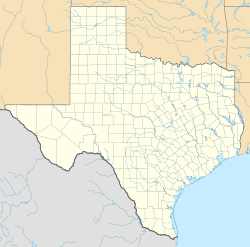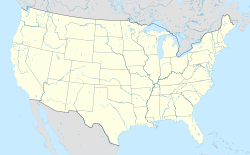| Comanche Springs | |
|---|---|
 | |
 | |
| Name origin | Awache (Wide Water) |
| Location | Fort Stockton, Pecos County, Texas |
| Coordinates | 30°52′54″N102°52′44″W / 30.88167°N 102.87889°W |
| Spring source | Edwards Aquifer |
| Elevation | 2,940 feet (896.1 m) |
| Type | Artesian aquifer |
| Provides water for | Rio Grande |
Comanche Springs was an aquifer of six artesian springs geographically located between the Edwards Plateau and the Trans-Pecos regions of West Texas. [1] [2] The military fortification Camp Stockton was built around the springs, eventually growing become the city of Fort Stockton.
Contents
- History
- Rio Grandé and Spanish expeditions
- Forts and west frontier
- Nomadic culture of Plains Indians
- Irrigation of arid lands
- U.S. federal laws for arid lands irrigation
- Case law of Texas Rio Grandé and Trans-Pecos
- Historical record
- Illustrations
- See also
- References
- Historical video archive
- External links
The groundwater source originated from a Comanchean limestone fault combined within the bountiful Edwards Aquifer and the Glass Mountains. [3] [4] The natural spring has a physical geography routing north through Comanche Creek forming a confluence with Leon Creek and the Pecos River. [5] The alluvial river is a tributary to the Rio Grande.




